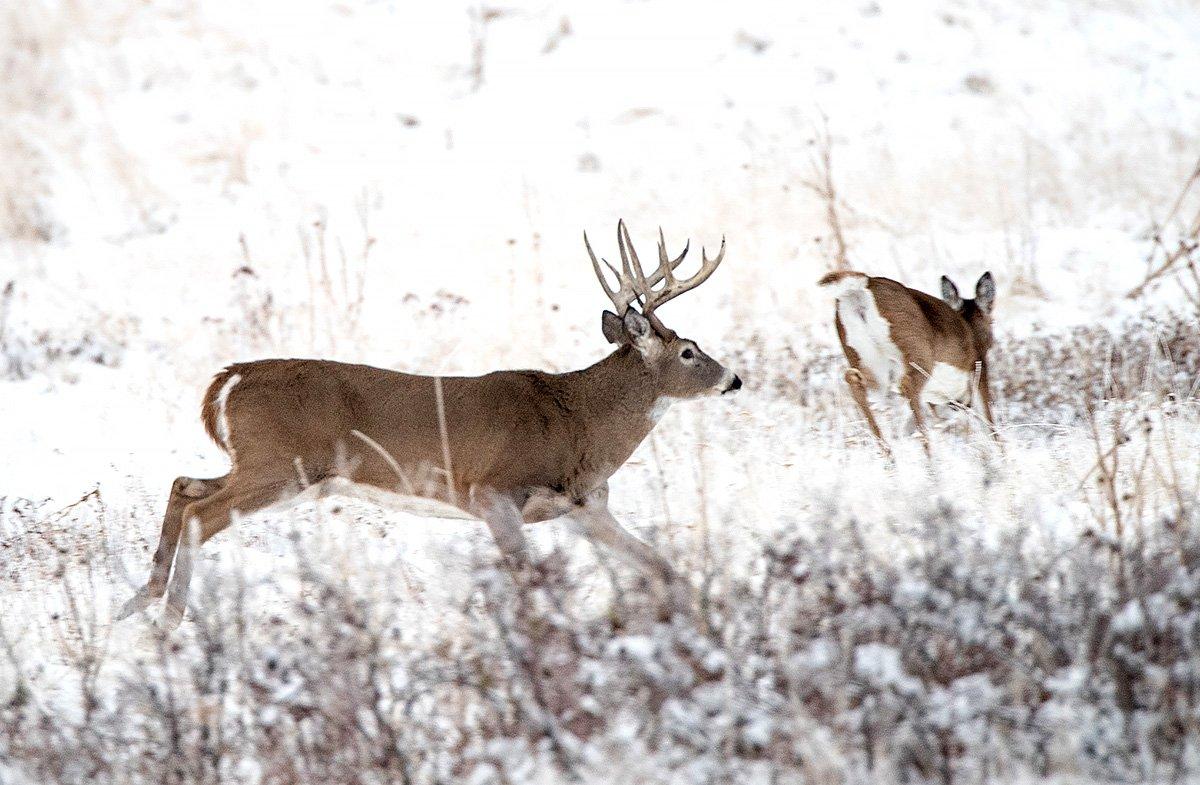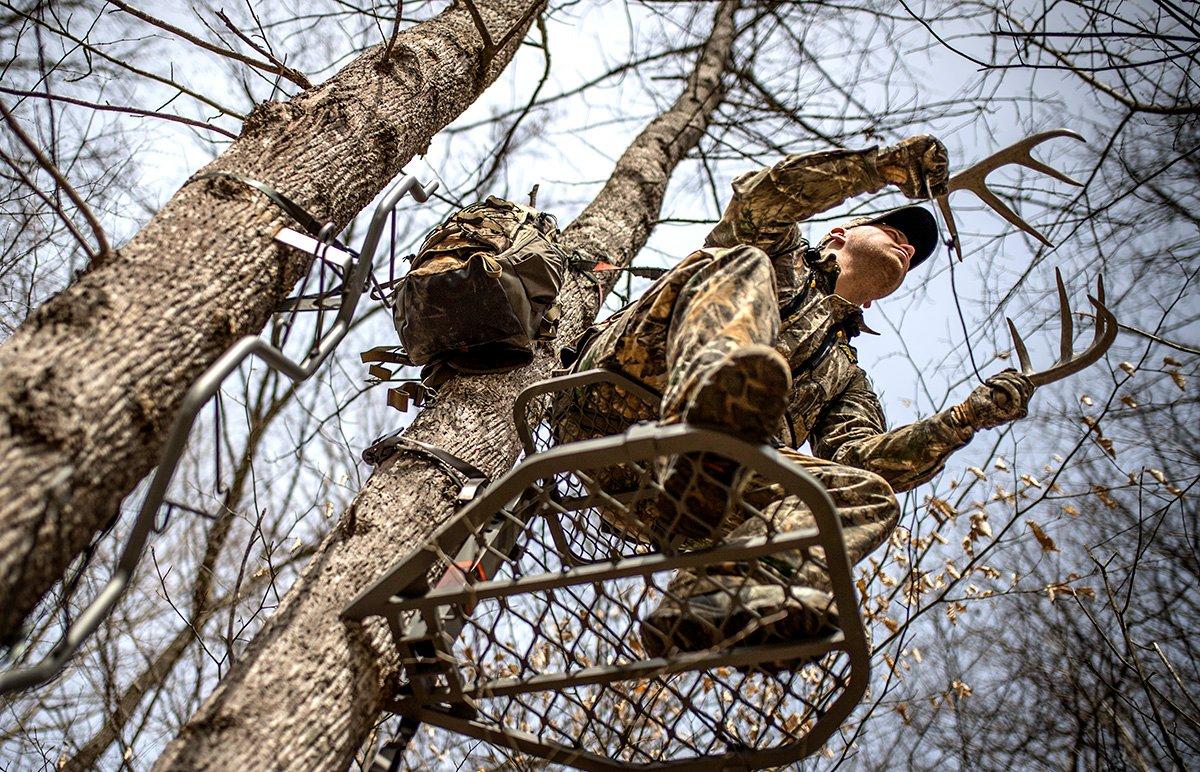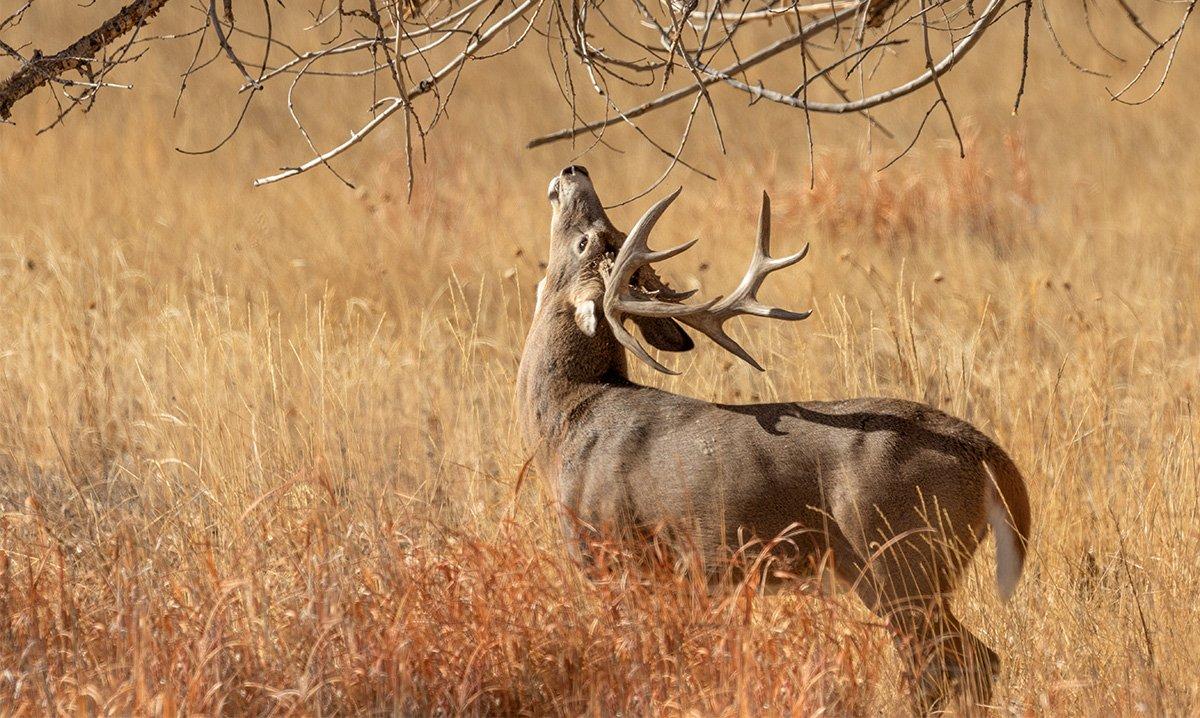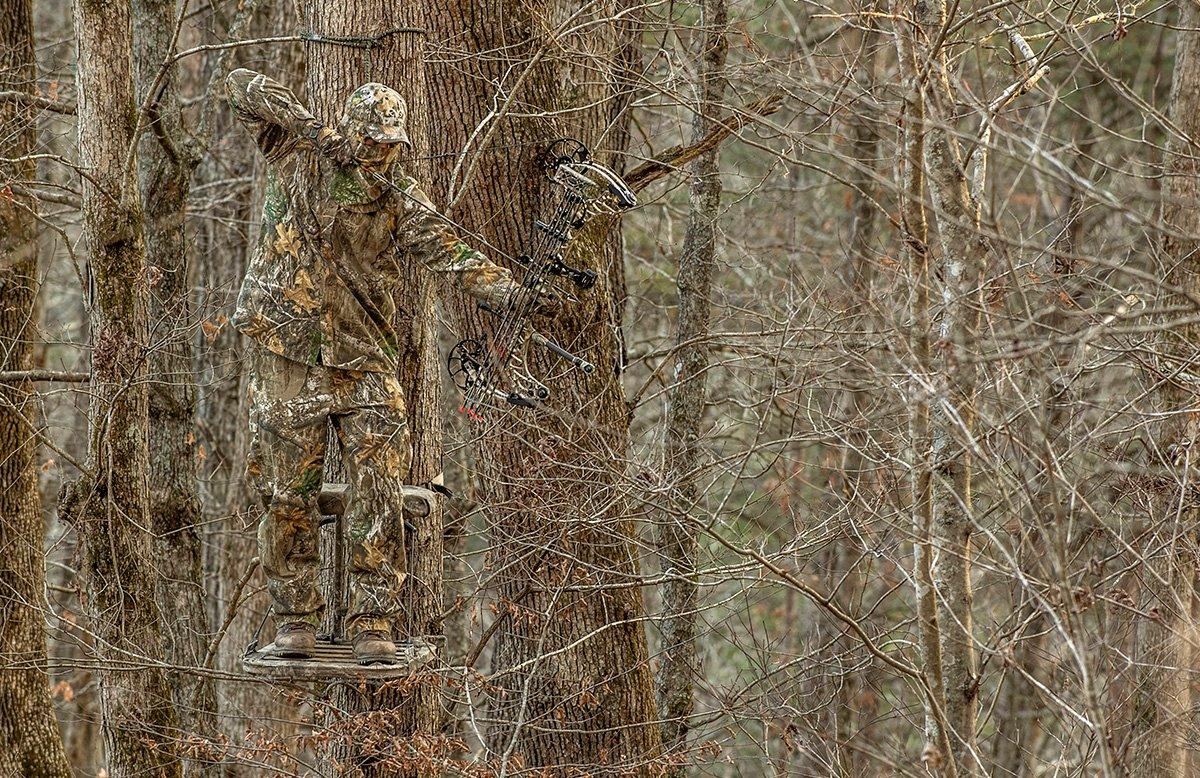November is finally here. Do you know how to make the most of deer season's craziest days?
You've waited all year for this. It's the rut, baby! No matter which week in November you take off work, your No. 1 strategy is simple: Spend every minute you can in your best stands because you never know when a good buck will prowl by, or come running hot on the heels of a doe.
Here are 30 more tips to help you punch your tag.
2. In addition to big rubs, look for clusters of antler-mangled saplings or cedar branches. These violent rubs are the sign of an aggressive buck, the kind you want to hunt because he's apt to move in daylight. Set a stand in the area.
3. Several studies show that deer rut hard when the barometer is between 29 and 30 and moving, another reason to watch a weather app closely.
4. Check an aerial map for a hardwood ridge within 150 yards or so of a corn or bean field. Many of the bucks that come and go to the field will cut across that ridge, often on one end where cover is thickest. Hang a stand there.
(Don't Miss: How to Hunt Big Buck Bedding Areas.)
5. If you hunt the dark moon week of Nov. 15, expect deer movement to be best in the mornings, especially the first three hours of daylight.
6. One November morning, Don Kisky left his farmhouse with five tree steps in his pocket. He climbed an oak tree, glassed CRP for 30 minutes, and picked up a glint — a big antler beneath a cedar tree. The bedded deer looked exhausted from chasing does all night, and Kisky figured the buck would stay put. The Iowa hunter scrambled down and stalked for an hour. When he felt he was close, Kisky drew his bow, rose up over a berm in the grass, and nailed the 162-incher.
When terrain and wind conditions are right, try glassing and stalking during the rut. While it's doable with a bow, it's obviously easier with a gun.
7. How old is that deer? Glass a buck's hocks if you have time. As they get older, bucks do more rub-urination when they visit scrapes, so a buck with a very large, dark tarsal stain is an active scraper and is probably at least 4 1/2, says Lindsay Thomas of the Quality Deer Management Association.
8. Biologist Mick Hellickson has taken and analyzed hundreds of thousands of camera images of Iowa and Texas bucks. No doubt, big deer love to travel and check for does where two or more narrow fingers of timber intersect. Now you know a great spot to hang cameras and treestands.
9. A scrape without a broken lick branch dangling above it is not worth hunting. Keep looking.
(Don't Miss: The Best Shot Placement on Deer.)
10. Good scrapes to watch are freshly pawed ones deep in the woods, with brushy cover and doe trails nearby.
11. A Georgia study found that one set of scrapes might go cold overnight, while other scrapes just 100 yards away might be pawed madly and stink of urine. Stay on the lookout for fresh dirt.
12. Low, guttural tending grunts are most commonly made when a buck is tending a doe in heat, but a dominant buck will also make the call while cruising alone in search of a doe. On your tube, blow loud grunts that sound like urrppp, urrppp, urrppp, every 30 minutes or so while on stand in hopes of striking a rut-crazed buck.
13. Doe bleating doesn't get a lot of love these days, but it can work. Turn a can call over four or five times. Back up those bleats by blasting air and wheezing loudly out your nose and mouth to mimic a doe that is feeling it, but not quite ready to breed.
14. When a buck gets in tight, don't fiddle with a call to stop him. Draw your bow or aim your gun first, and then call with your voice — a simple eck or ack will do. When he stops, and he will, shoot!
15. If a big doe comes prancing by with her tail straight out and shaking, get your bow or gun ready. She's on the brink of estrus. One, two, or more bucks are apt to roll by hot on her hooves.
16. Maryland researchers monitored 20 radio-collared bucks and found they roamed 1.5 to 3 miles per day during the pre-rut and rut. Texas researchers found that some bucks moved 7 miles per day in the rut. Science reaffirms what we said back in tip No. 1: Stay on stand as many hours as you can hack it. You never know when one of those vagabonds will loop past your post.
(Don't Miss: You Wounded a Buck. Will he Come Back?)
17. Oklahoma study: When bucks embark on rut excursions, they prefer to move in linear patterns. By traveling for miles in straight lines, they maximize their chances of contacting hot does. Set a stand or two along a linear creek bottom or long, flat ridge to intercept a buck.
18. Penn State researchers found that adult does go on rut excursions, too, perhaps 2 to 4 miles a day. A roamer doe is apt to pick up a horny buck and drag him past your stand, so stay ready.
19. In a Texas study, researchers rattled 171 times at different locations and pulled in 111 bucks. Nearly 70 percent of the bucks came in between 7:30 and 10:30 a.m.
20. In the same study, the biologists documented that cool mornings with cloud cover and little or no wind are best for rattling in bucks.
(Have you Ever Rattled up a Buck with a Climbing Stand?)
21. Make a simple double-drag by tying a scent wick on a 4-foot string; halfway up the cord, tie on a shorter string with another wick. Juice the main drag with buck urine/tarsal scent and the second wick with doe-in-heat. Pull the buck-dogging-a- doe ruse straight to your stand or blind.
22. Many of you hang scent too low. Reach up and tie a wick 6 feet high so the wind and thermals swirl and carry the scent.
23. A mature buck that is rutting, but not so much that he is out of his gourd, will circle 100 yards or so downwind of a food source, scent-checking the does before he commits and comes in to check them. He'll do it almost every time.
It's still true. On a recent hunt in Saskatchewan, three does that were eating the feed I was watching kept throwing up their heads and staring nervously into the timber downwind. When the lead doe finally turned, stamped her foot, and took off, I aimed my rifle. The 150-inch buck trotted in and I dropped him. Key on the does because their body language and behavior can give bucks away.
24. Hunt downwind of an X where two or more trampled doe trails intersect in the woods. At the doe junction you'll likely see ripped rubs and scrapes where multiple bucks stopped to signpost. Set a stand high and downwind of the intersection, where you can watch down into thick cover for bucks.
25. If it's a bumper acorn year in your area, think back to the ridges and bottoms where you found the most nuts in September. In those areas, you'll find pockets of heavy rubbing and scraping in the rut.
26. During lockdown in mid-November, glass for a giant guarding a doe or bedded with her in a fallen treetop, a clump of brush out in the open, or a similar weird spot.
27. Killer spot for a bow stand: Hang on a long, linear edge where pines meet hardwoods. Bucks love to rub, scrape, and walk the break line.
28. Another hot bow stand: Slip in and set a stand on the edge of a small clearing in the woods 50 to 120 yards off a field of alfalfa, beans, or clover. In the rut, deer move off fields at first light and filter through these satellite clearings to posture, sniff each other, or spar before heading deeper into the woods to a bedding area. This is a morning sit. You never know what you'll see, but if it's a deer with a big rack, take him.
29. Killer gun stand for the rut: Set up high on the edge of a CRP field, an overgrown pasture, an old brushy clear-cut. Some does will gravitate there to bed and hide from randy bucks. Bucks will cruise around in the chest-high cover after them. It is a perfect spot to rattle until 11 a.m. or so.
(What's the Best Straight-Wall Rifle Round for Deer Hunting?)
30. Prime muzzleloader setup: Sit three-quarters of the way up a hill, on the ground and tucked low against a big tree, and watch across and down to an adjacent hillside dotted with green thickets. Bucks move all day from one cover to the next checking for does.
31. Since everybody and his brother hunts the rut, you need a pressure plan, especially on public land. Try this: Find a rough, thick draw or canyon a half-mile from fields and creek bottoms where others hunt. Hang a treestand where you can see well. If there's little buck sign around, great, because nobody else will want to hunt there.
Once the guns boom in the pressure zones for a few days, you can bet bucks will find the out-of-the-way cover and pile in. Be there. Good luck!











